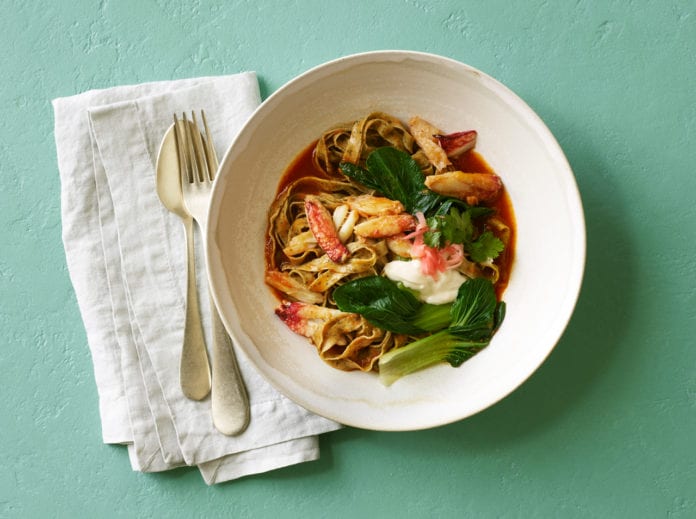Discerning diners increasingly expect innovation and new flavours from foodservice establishments. Within this operating environment, incorporating Asian flavours has emerged as an effective strategy for keeping menus fresh and noteworthy.
As Andrew Hunter, corporate chef, Kikkoman Sales USA, Inc., highlighted in a recent webinar presented by Kikkoman titled Asian Flavor Boom, versatile sauces can be an easy way to incorporate this trend into a restaurant’s offerings. He points to katsu sauce as a Japanese sauce that can cross boundaries and barriers. “Lots of people who would be afraid otherwise to try Japanese food, or Asian food in general, will taste katsu sauce on a fried chicken cutlet — or even drizzled over a steak or vegetables — and like it a lot,” he explains. “It’s very approachable.”
Asian flavours sit at the intersection of a variety of current food trends, including interest in unique flavours, spice and bowls — and can also play into the growing interest in fermentation, healthy dining, customization and vegetarian/plant-based offerings. In fact, according to U.S.-based Dataessential’s Menu Trends database, five of the 10 fastest-growing flavours, spices or sauces in the U.S. are Asian or Asian-inspired — including gochujang, matcha, furikake (a dried-fish based Japanese seasoning), turmeric and sriracha aioli.
Plus, a large number of North-American diners are generally familiar with, and enjoy, Asian cuisines and flavours. According to Datassential, 61 per cent of U.S. consumers like or love Asian food, while 78 per cent like/love Chinese food and 51 per cent like/love Japanese food. Looking at more specific items/flavours, soy sauce (63 per cent) and teriyaki sauce (61 per cent) were ranked highly, as were wontons (48 per cent) and ginger (46 per cent).
Incorporating Asian flavours into existing menus has been leveraged by restaurants across segments and categories, both through limited-time offers and permanent menu items. For example, Jack Astor’s recently launched 11 new internationally inspired bowls and salads in its locations across Canada — six of which feature Asian-inspired flavours, including the Korean Rice Bowl, Honey Sesame Stir-Fry Bowl and Singapore Slaw.
Industry suppliers, such as Kikkoman, have taken note of this market shift. “We’re thrilled to see North Americans exploring new takes on Asian cuisine — think katsu sandos, umami burgers and sushi burritos,” says Jane Foreman, Senior Manager of Marketing & Product Management for Foodservice, Kikkoman Sales USA. Inc. “Kikkoman is constantly meeting with top chefs and restaurant chains to find new ways to trend ahead of consumer demand. Our passion is to create signature sauces and LTOs that excite diners.”
Those looking to differentiate their offerings can also look to flavours currently at earlier stages within the menu-adoption cycle (tracking from inception through adoption, proliferation and ubiquity), such as ponzu and yuzu, which Datassential identifies as being in the inception stage (in terms of menu penetration). At this stage in the cycle, these specialty ingredients typically tend to appear in fine-dining establishments and elevated mixology programs.
For example, when Sassafraz in Toronto’s high-end Yorkville neighbourhood underwent a refresh ahead of its 20th anniversary, chef Geoff Webb created a new menu offering several internationally inspired dishes, including Cape d’Or salmon with chilled soba noodles and ponzu dressing.
“Kikkoman’s Lime Ponzu Citrus Seasoned Dressing & Sauce is the key to marrying Asian and Latin flavours,” adds Foreman. “It has the right balance of umami with citrus notes, perfect for fusion tacos or adding a flavorful kick to ceviche.”




















